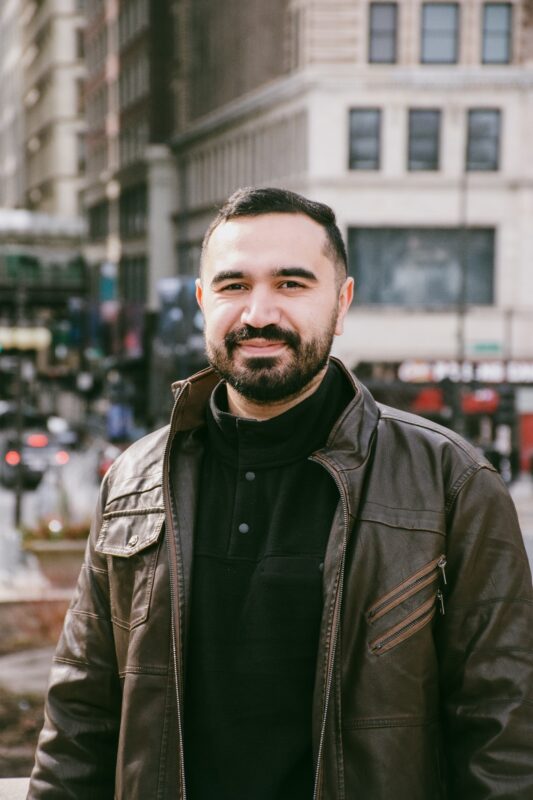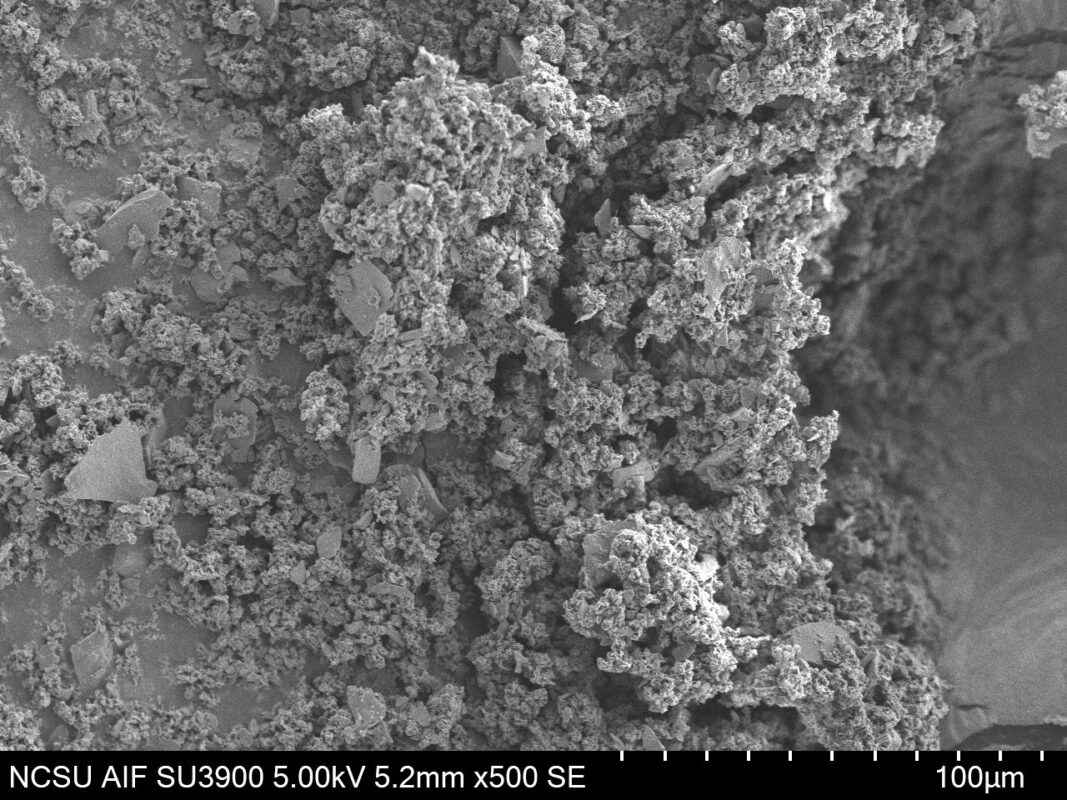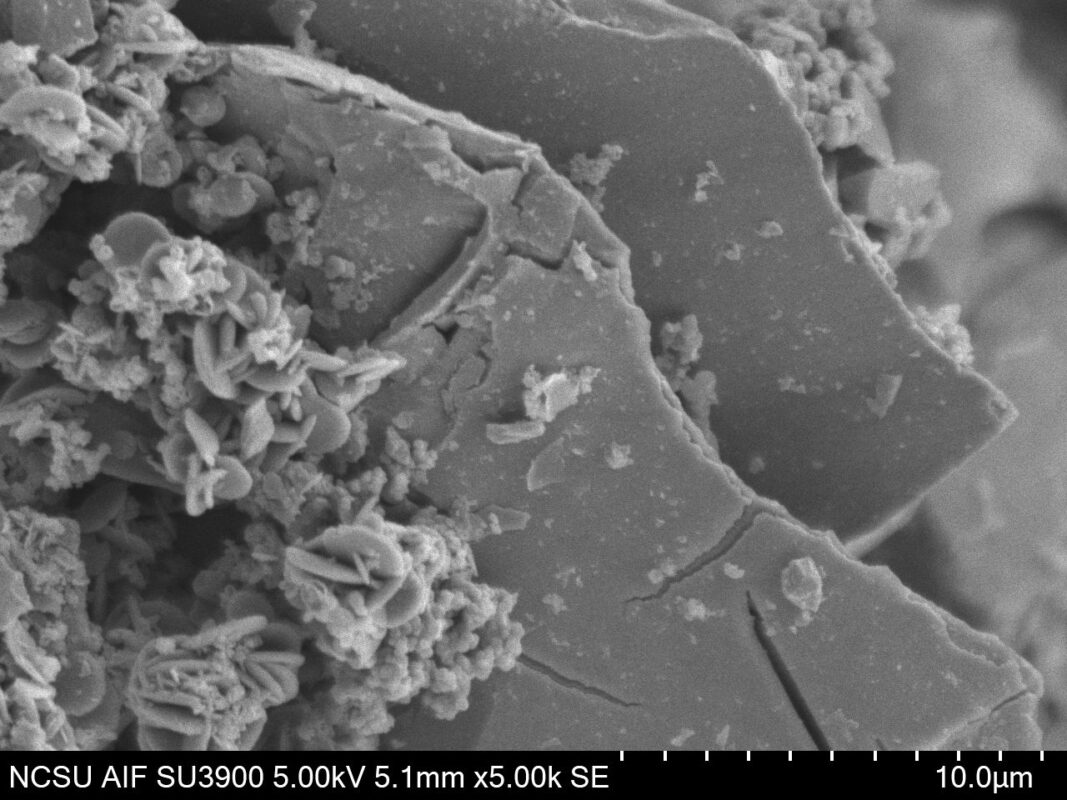
My name is Mohamad Javad (MJ) Haghighat Manesh, and I am currently a third year PhD candidate in the Chemical Engineering program with a minor in biotechnology. I work in Dr. Robert Kelly’s Hyperthermophiles Lab in the Chemical and Biomolecular Engineering department. I was born in Iran, and after completing my undergraduate studies in Tehran, I moved to the US and received a master’s in biomedical engineering from Ohio University. I joined NC State in 2020 and received my master’s in chemical engineering in 2022.
I enjoy travelling whenever I find the time. Other than that, I like reading novels, watching TV, going to the cinema and socializing with friends. I also try to keep an eye on the latest in the stand-up comedy scene. But the most fun is when I spend time with my cat Sancho!
What instruments are you using for your research and why do you like them?
I have mainly used the VP-SEM, XRD and XPS, the Keyence confocal microscope briefly, and I am going through the training for the ToF-SIMS instrument. I have also had samples imaged using the Bio-TEM. I like these instruments because all of them have provided valuable insights into different aspects of my research.
What have you been researching and how is it impacting the community?
Currently, my research focuses on extraction of valuable metals from mine ores through bioleaching, and bioseparation of rare earth elements using proteins.
A primary disadvantage of traditional methods of metal mining is the resulting environmental impact, including the wastewater containing toxic chemicals. Novel technologies are needed to decrease environmental side effects of metal extraction from ores. Bio-hydrometallurgical methods have shown promising potential to do so. In this case, bioleaching, the process of extracting metals using microorganisms, has been explored as one of the better alternatives to traditional metal ore extraction. Specifically, for copper-bearing ores, such as chalcopyrite, bornite and enargite, successful copper extraction by mesoacidiphilic microorganisms has been reported. Application of thermoacidophiles has also been considered. These microbes can grow in hot acid, which takes advantage of enhanced metal solubility. To improve bioleaching, the mechanisms by which thermoacidophiles catalyze the release of copper from ores are needed.
Lanthanides, yttrium, and scandium, known as the rare earth elements (REEs), are widely used for clean energy technologies, namely electric vehicles, wind turbines, and LEDs. However, moving from fossil fuels to green energy has been hindered by the limitations of REE supply. Extraction and separation of REEs have proven to impact the environment which undermines the sequential environmental benefits. Therefore, separation of REEs using biomolecules such as proteins would offer alternative, environmentally friendly ways to supply the REEs needed for green technologies.
While there are established ways of metal extraction and separation, these processes usually have adverse effects on the environment, and require energy-intensive approaches. In addition, implementation of these novel techniques requires fundamental understanding of the underlying mechanisms in each process, which is currently the main obstacle to having these methods used in the industry.


What have you learned from your experience at AIF?
There is always a way to find an answer to research questions! While the instruments have conventional applications that they are mainly used for, with the help of the AIF staff, I have realized that with some creativity and sometimes complementing the findings from one of two analytical techniques, we can achieve unique understanding of our research topics.
Best thing about AIF in 5 words or less?
Knowledgeable staff and fantastic resources
Is there a staff member at AIF that has helped you?
I would like to thank Dr. Aaron Bell, Jenny Forrester, Chuck Mooney, Elaine Zhou, Toby Tung, Sameera Pathiranage and everyone at the AIF for providing me with the opportunity to learn and use the resources at the AIF.